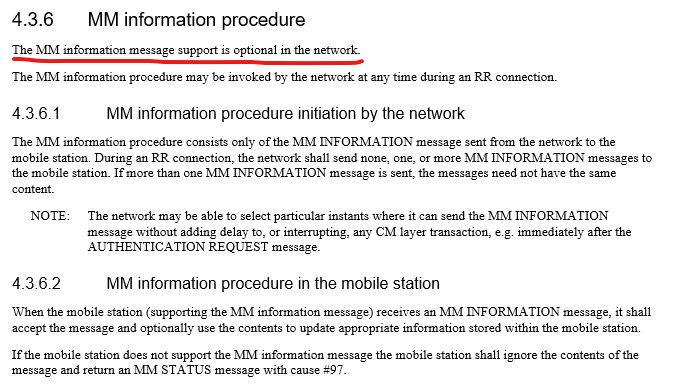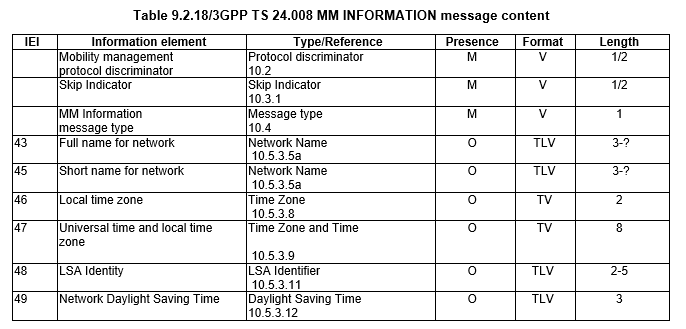LTE-M Roaming in Mexico is also available for our GSIM (IMSI starting with 90140) with Roaming partner Radiomóvil Dipsa (PLMNID 334020).
Table under https://docs.iotcreators.com/docs/roaming-mobile-iot-networks will be updated shortly.
KR, Ronan
Posts made by Ronan Lacroix
-
RE: LTE-M in Mexicoposted in Network & Coverage
-
RE: Band & operator selection (going global)posted in Hardware
Hi @magnatron ,
There is no general answer to your question, I’m afraid, as both options (automatic and manual network selection) come with benefits and drawbacks that will strongly vary depending on your use case scenario.
In principle, going for an automatic network selection is the safest way to go, as it allows the module to find and attach to any available network according to predefined and standardized rules set in your module and SIM-card (network availability obviously also implies a roaming agreement between your Operator and the Operator of the visited network!).
The main drawback in this case is the time and energy it takes for the device to attach for the very first time, as it usually needs more time to scan all bands and identify all available networks before picking up the most appropriate one (based on the aforementioned rules).
Depending on the region where your solution is deployed, you may however shorten this scan period by only configuring those bands that are relevant for that region, for instance Bands 3, 8 and 20 for most European countries (or even Bands 8 and 20 only for NB-IoT).
Furthermore, note that the device module will usually remember which network it connected to last (the so-called “last registered PLMN network”) and try to re-attach to the same network, hence avoiding the initial long band scan. As a result, there will mostly be no significant drawback for subsequent attaches if your device is stationary or roaming within one single country.
Things however can get more complicated if your device is battery-powered and moving between multiple countries/regions as a band scan will need to be initiated each time the device is leaving the coverage of the last registered network.
In this case, a programmatic approach based on selective manual scans and network selections might provide better results in terms of energy consumption and communication latency, however be aware that such an approach requires a very careful and thorough implementation as the tiniest programmatic failure may lead to the device not being able to attach at all to any network.
I hope this can help you in some ways! @others, please feel free to comment or provide additional advice!
Kind regards, Ronan -
RE: One SIM for all RATs?posted in General discussion & other topics
Hi @Wolfgang6177 ,
If you have a DT tariff that includes LTE/4G, then you may also access our LTE-M network. Yet for NB-IoT, you need a dedicated Multi-Mode tariff and SIM-card (Global SIM).
Please follow this link for more details.
Kind regards, Ronan -
RE: eDRX in LTE-M Networkposted in Network & Coverage
@Herr-Bruns,
Sorry for my long silence!
I just wanted to inform you that eDRX has eventually been enabled a few weeks ago and is available across our complete LTE-M network.
Please let me know if you have any questions when testing this feature.
Kind regards,
Ronan Lacroix -
RE: Network timeposted in Network & Coverage
@Lauwie007
I have not tested it myself, but I guess your live test has just proven it, hasn’t it?
Keep in mind that this time is provided by the local network in which you are actually roaming, so if you’re roaming in say, the Vodafone UK network, this time and associated timezone will be provided by Vodafone UK (if supported as just discussed).
Kind regards, Ronan -
RE: Network timeposted in Network & Coverage
@Jeroen-van-Bussel
Time is provided in GMT, which is not influenced/changed by the DST status.
KR, Ronan -
RE: Network timeposted in Network & Coverage
@Jeroen-van-Bussel
Please do not quote me on this (I’m not a 3GPP specification expert), but according to 3GPP 24.008, the MM (for Mobility Management) information procedure and information message (which optionally contain the time information) unfortunately are optional in the network (see extracts below from the specification in its release 15).Kind regards, Ronan


-
RE: eDRX in LTE-M Networkposted in Network & Coverage
Feature deployment is in preparation, please bear with us a little longer…

Kind regards, Ronan
-
RE: PSM settings with roaming sim cardposted in Network & Coverage
Full LTE-M Roaming support with EMnify will be implemented in Germany on March 18, 2022. From that date onwards, PSM and Long-Periodic TAU features should be available to you with this SIM-card.
Availability dates in Austria and other DT networks however aren’t currently available.Kind regards, Ronan
-
RE: Network timeposted in Network & Coverage
Hi all,
Please note that network time is now also provided over our LTE-M network in Germany, and can be retrieved with the usual AT commands (e.g. AT+CCLK?, AT+QLTS=2, …)
Best regards,
Ronan
-
RE: eDRX in LTE-M Networkposted in Network & Coverage
@herr-bruns ,
Hi Mr. Bruns,
We have started piloting eDRX for LTE-M in parts of our network. If everything runs smoothly, we will deploy the feature nationwide beginning of next year and make it available to all our customers.
I will inform you as soon as we are done!
Kind regards,
Ronan Lacroix -
RE: Network timeposted in Network & Coverage
@Sven-Brandau ,
Please note that “network time” has meanwhile been enabled in our NB-IoT network in Germany, so that AT command “AT+CCLK?” should no longer return an error.
Kind regards,
Ronan -
RE: eDRX in LTE-M Networkposted in Network & Coverage
@herr-bruns , we can’t provide you with a concrete activation timeline yet unfortunately, but we will inform you as soon as possible, tentatively in the coming month.
-
RE: eDRX in LTE-M Networkposted in Network & Coverage
Dear Mr. Bruns,
The eDRX feature unfortunately isn’t yet available in our German network but its nationwide deployment is in preparation. I will gladly inform you via this post as soon as it is done.
If it can help (for test purpose), eDRX has already been enabled in Austria in our Magenta Telekom network and is being rolled out as we speak in our T-Mobile Netherlands network.
Kind regards,
Ronan Lacroix -
RE: Roaming - local network partnersposted in Network & Coverage
@JakubT ,
May I ask you if you’re still encounting roaming connectivity issues?
If you do, please don’t hesitate to provide us more details about the exact problem you’re experiencing!
Best regards,
Ronan -
RE: RRC inactivity timer duration for NB-IoT and LTE-Mposted in Network & Coverage
Hi @Alessandro-Parmigiani ,
The RRC inactivity timer is set by the network and cannot be modified by the device. Its value is usually consistent within one network (there are exceptions, though!) but it is not necessarily identical across all network technologies (e.g. NB-IoT and LTE-M).
Note that for NB-IoT, the RRC inactivity timer may also have different values depending on the CE-Level in which the module is (CE0, 1 or 2).In Germany, the timer is set to 10s for LTE-M and between 20s and 30s for NB-IoT depending on the area.
We are however reviewing those values at the moment and will most probably shorten the RRC inactivity timer for NB-IoT in the near future, especially for CE Level 0 and CE Level 1.
We will gladly inform you via this post whenever this change has been performed!If your application however does not expect downlink data after sending an uplink message, we strongly recommend using the Release Assistance Indication on NB-IoT to bypass this RRC Inactivity period and immediatly switch to Idle mode (as mentioned by Stefan de Lange above).
RAI is supported across all DT NB-IoT networks, with some regional limitations within our Polish network.
This feature unfortunately isn’t yet available for LTE-M, but has been standardized by 3GPP. It is therefore likely to be implemented in the future both by module vendors and network providers.Hope this can help!
Best regards,
Ronan
-
RE: Roaming - local network partnersposted in Network & Coverage
This essentially depends on your SIM contract and associated tariff. If this tariff includes EU-Roaming for instance, then Roaming in all Roaming Partner networks should be possible, and not only in DT’s own affiliates’ network.
Best regards,
Ronan -
RE: Roaming - local network partnersposted in Network & Coverage
@JakubT ,
Could you help us understand what you exactly mean with “SIM-based restrictions”? Which specific issues are you experiencing?
Are you also talking about a network technology specifically (e.g. NB-IoT or LTE-M)?
Best regards,
Ronan -
RE: SIM7020E has trouble entering PSMposted in Hardware
Hi MeneerJacco,
You may want to specify the PSM Timer value to be used before entering Power Saving.
If you want the module to enter PSM right after leaving its connected mode, use for instance the command:AT+CPSMS=1,,,,"00000000"You may also want to provide a longer TAU timer. To configure for instance a TAU Timer of 3 hours and a PSM of 0s, enter:
AT+CPSMS=1,,,"00100011","00000000"Best,
Ronan
-
RE: Cell reselection with NB-IoTposted in Network & Coverage
@FrancoisD ,
Cell reselection is natively supported by the NB-IoT network, there is nothing to be done at the module level to enable this feature.Best regards,
Ronan
-
RE: eDRX in Germany for NB-IoTposted in Network & Coverage
@lorenz
Dear Lorenz,
Thanks a lot for the feedback and I’m glad to see eDRX is delivering its promise on energy saving!
Another tip maybe: please consider setting your preferred Periodic TAU Timer to save further energy.
This can be done without setting any PSM activity timer with the CPSMS command, with a TAU-timer of up to 310 hours.
To enable Long-Periodic TAU without PSM, use value “11100000” for parameter <Requested_Active-Time>.
Best regards,
Ronan -
RE: eDRX in Germany for NB-IoTposted in Network & Coverage
@lorenz ,
Looking one more time at your logs above, it looks like you have enabled PSM in parallel to eDRX with a PSM Activity Timer of 10s only.
If this is the case, then eDRX obviously cannot work past those 10 seconds. Do you confirm?
Best,
Ronan -
RE: eDRX in Germany for NB-IoTposted in Network & Coverage
@lorenz ,
We will try to reproduce this issue with a BC95-G and get back to you.
We tried earlier with a BG95 (that uses a different chipset), but all tests have been successful, also with a 1nce SIM-card.
Kind regards
Ronan